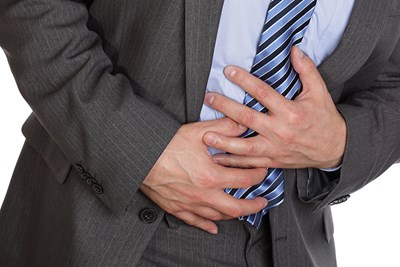Salmonellosis is an infection caused by the bacteria Salmonella, a group of bacteria in the Enterobacteriaceae family. Salmonellosis may appear in more than one form and can contribute to illnesses such as Typhoid fever and other infections. The most common and well known of these is a nontyphoidal type of gastroenteritis. Here’s a look at some potential treatment options for Salmonellosis.
What is Salmonellosis?
Salmonellosis may appear within anywhere from 6 to 72 hours of contact with the foodborne Salmonella, although 12 to 38 hours is the most common time of occurrence. Symptoms typically include loose stool or watery diarrhea, fever, abdominal cramps, chills, headaches, and muscle pain.
Symptoms may last for only a few days up to a week. In a generally healthy adult, symptoms may simply run their course, although it can take several months for the bowels to return to normal. However, in special populations such as older adults, very young children, or those with a compromised immune system, salmonellosis can be more serious -- especially if it leads to dehydration as a result of continuous diarrhea.
Treating Adults
For most adults, symptomatic treatment of salmonellosis may be all that is necessary. You can simply take an over-the-counter anti-diarrheal, such as Imodium, which may also reduce abdominal cramping. However, taking an anti-diarrheal can actually extend the duration of the diarrhea.
Many people find that eating or drinking will simply increase gastrointestinal distress, but it is important to keep yourself hydrated until the illness has run its course. Adults may find that drinking plenty of water and eating small amounts of food that tend to be gentle on the stomach (such as chicken broth) may be sufficient for a few days. However, sticking to a gentler form of your normal diet may be better for ensuring you receive adequate nutrition. In any case, be sure to avoid foods that are high in fat, high in sugar, spicy foods (that can be hard on the gastrointestinal tract), coffee, and alcohol.
Treating Children
Children, on the other hand, may do better with something like Pedialyte that provides hydration as well as some essential vitamins and minerals to keep their body better supplied with nutrients. Opt for frequent small amounts, rather than trying to consume large amounts throughout the day -- however, experts do recommend at least one glass of water or healthy beverage to each watery stool. Avoid extremely sugary drinks, as this does not supply the electrolytes you lose. Tylenol can help reduce fever, as well as help with any associated headaches or muscle pain. Talk to your doctor about the appropriate amount to give a child.
Severe Treatment
Although Salmonella is a bacteria, antibiotics are generally reserved for only the most serious cases, those that generally require hospitalization. Utilizing antibiotics for a case that is not serious can actually mean you will be carrying a bacteria for longer. Situations requiring hospitalization mean the bacteria has spread to the bloodstream, and thus has the potential to spread to other bodily systems beyond the gastrointestinal tract. Other treatments that may be necessary during hospitalization include receiving intravenous fluids to help rehydrate the body.



